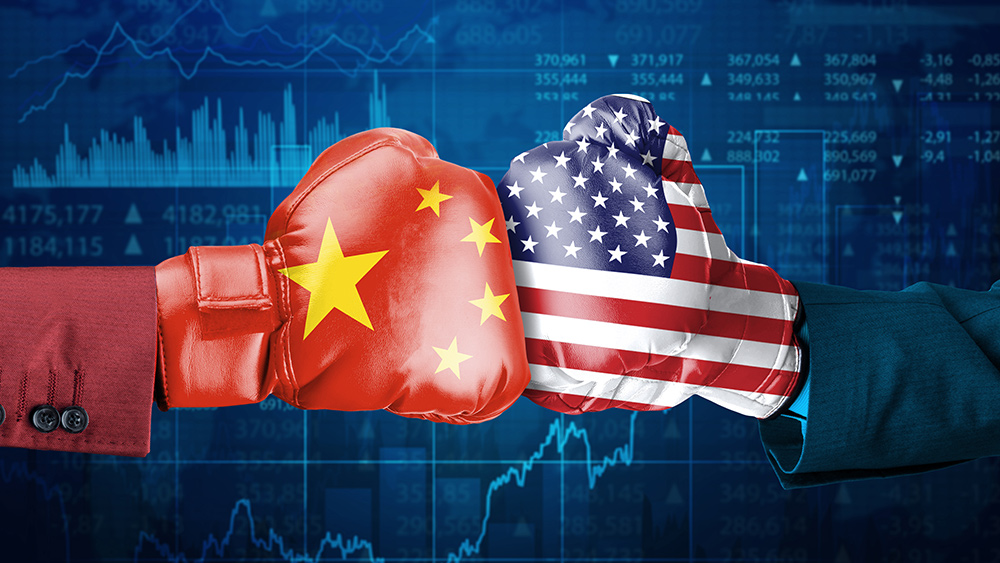 Parler
Parler Gab
Gab
- China’s Green Energy Paradox: While China leads the world in producing and deploying renewable technologies like solar and wind, it simultaneously remains the top global consumer and builder of coal-fired power plants. In 2024 alone, China approved over 66 GW of new coal capacity and started construction on nearly 95 GW — 93% of all global coal project starts.
- Energy Security Trumps Climate Goals: The Chinese Communist Party prioritizes energy reliability over emissions targets. Due to the intermittent nature of wind and solar power, China continues to rely heavily on coal to secure stable electricity for its massive population and economy, undermining its long-term climate commitments.
- Renewables Not So ‘Green’: Critics argue that so-called “green” energy technologies depend on extensive mining, rare earth extraction, and non-recyclable components, making them environmentally costly. Studies show that renewables, especially with battery storage, can be hundreds of times more resource-intensive than natural gas.
- Global Implications of China’s Coal Push: China’s coal strategy not only challenges its own climate pledges but also distorts global renewable markets through state subsidies and underpriced exports. This dual role — as green tech exporter and coal polluter — highlights the contradictions in global climate progress.
‘Green’ China runs on dirty coal
China has rapidly become a global powerhouse in renewable energy development, manufacturing more solar panels, wind turbines, and energy storage batteries than any other nation. In just the first five months of 2025, it added enough renewable infrastructure to match the electricity capacity of entire countries like Poland or Turkey. In fact, China now accounts for nearly half of the world’s solar energy capacity, thanks largely to government-driven directives and state subsidies that allow it to undercut global competition. However, this success story comes with a catch: These market practices — considered dumping — have triggered trade tensions and damaged foreign clean-tech industries. But China’s renewable energy achievements are only one side of the story. Simultaneously, the country is aggressively expanding its coal-fired power capacity. In 2024, China approved a record 66.7 gigawatts (GW) of new coal power and began constructing 94.5 GW — accounting for 93% of all new coal power projects globally. The revival of previously suspended coal plants adds to the evidence that Beijing has no intention of abandoning coal anytime soon. With a typical coal plant lifespan of up to 60 years, these investments signal long-term commitment to fossil fuel use. Why this energy duality? The Chinese Communist Party views energy security as paramount. While renewables are growing, they are inherently weather-dependent and lack the reliability needed to power an industrialized superstate. Coal remains a stable, controllable, and domestic energy source in a world of increasing geopolitical and supply-chain instability. China’s energy import strategy also underscores its coal dependency. In 2023, China imported 442 million tons of coal, and in 2024, that number is expected to hit a record 542.7 million tons. Despite expectations for a slight decline in coal use by 2025, the scale of new coal development contradicts any serious pivot to renewable dominance. Critics argue that the broader notion of green energy is itself flawed. Wind turbines, solar panels, and energy storage batteries require massive quantities of mined materials — such as cobalt, lithium, and rare earth metals—that are not only environmentally destructive to extract but also difficult to recycle. Studies have shown that when factoring in battery storage, solar and wind energy are hundreds of times more demanding in mineral resources than natural gas. Even renewable-friendly institutions like the University of Pennsylvania’s Kleinman Center admit the global shift to clean energy will strain critical resource supply chains like never before. In sum, China’s embrace of coal is not a deviation from its green goals — it is a reflection of the economic and technical realities underpinning them. While the nation may boast of its renewable energy leadership, the enduring dominance of coal reveals a deeper truth: the road to a clean energy future, especially in China, remains paved with carbon. Check out ClimateAlarmism.news for updates on psychotic billionaires trying to convince Americans to save earth from climate change while China and India pollute the world worse than all the other nations put together. Sources for this article include: NaturalNews.com ZeroHedge.com EIA.gov ScienceDirect.comAnother silent siege on user data as Google’s Gemini AI oversteps android privacy
By Willow Tohi // Share
Gender-confused arsonist arrested following failed firebombing of Michigan GOP office
By Ramon Tomey // Share
Nature’s classroom: How green spaces shape young minds for success
By Ava Grace // Share
Mike Adams and Alex Jones: WOKEISM has crippled U.S. AI development, giving China the lead
By Kevin Hughes // Share
Governments continue to obscure COVID-19 vaccine data amid rising concerns over excess deaths
By patricklewis // Share
Tech giant Microsoft backs EXTINCTION with its support of carbon capture programs
By ramontomeydw // Share
Germany to resume arms exports to Israel despite repeated ceasefire violations
By isabelle // Share










